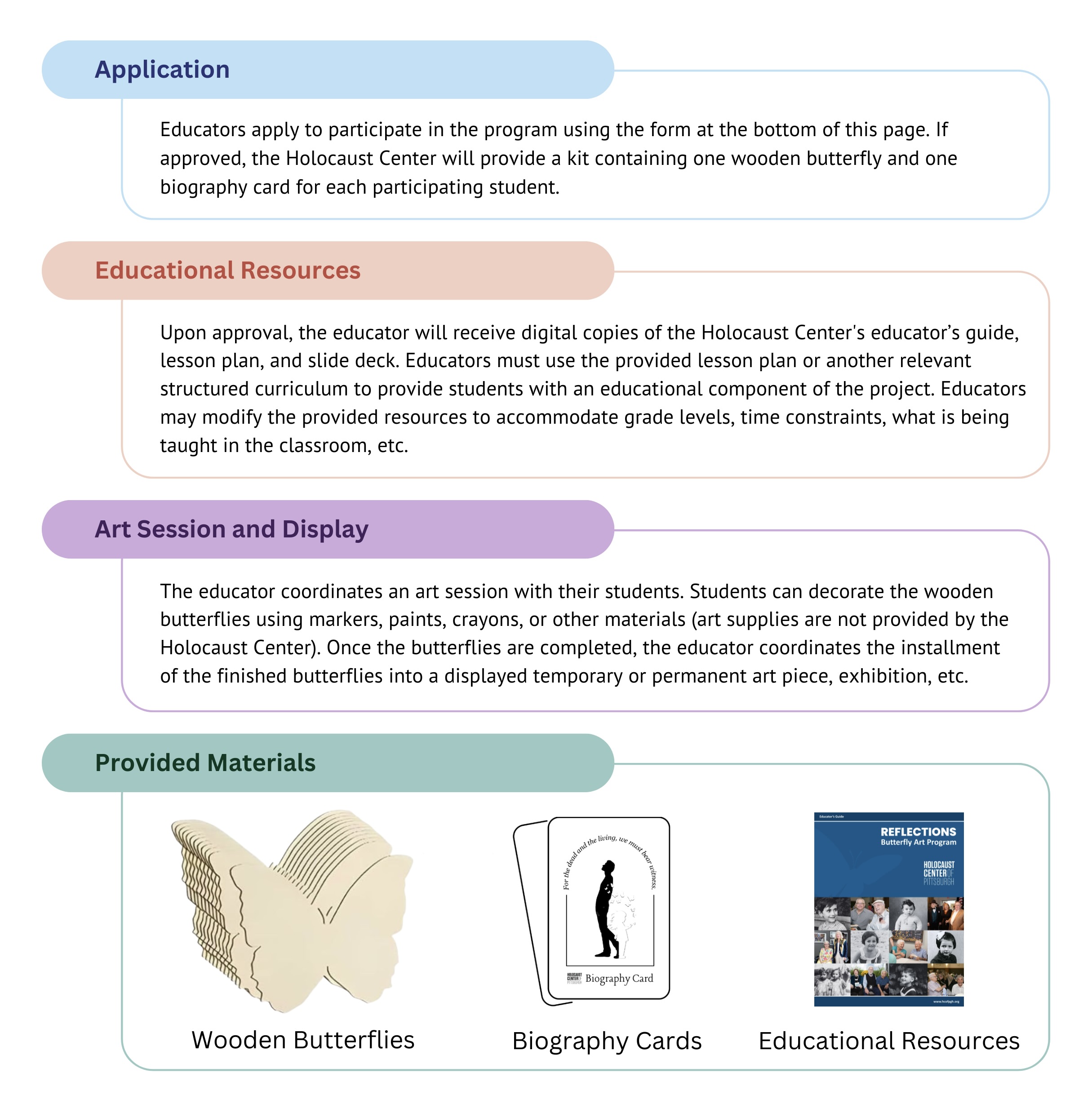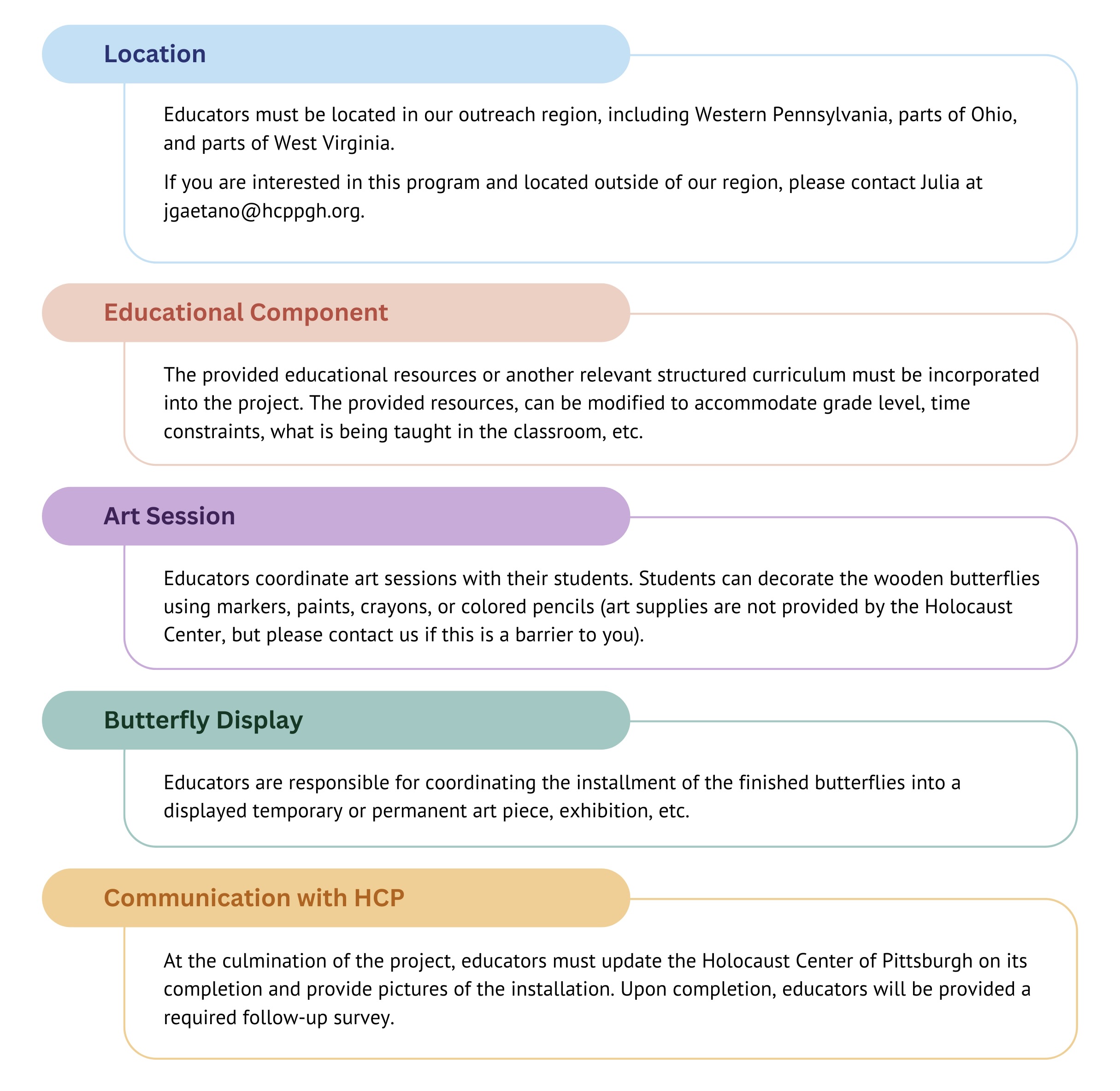
About the Program
Reflections: Butterfly Art Program is an educational art and storytelling initiative from the Holocaust Center of Pittsburgh (HCP) in which students decorate wooden butterflies in memory of children who were murdered in the Holocaust. In addition to a butterfly, each student receives a biography card that tells the stories of both a child victim and a Holocaust survivor who later rebuilt their life in Pittsburgh. This project aims to honor those who were lost, elevate the voices of those who survived, and foster intergenerational connection through creativity and remembrance.
The Holocaust Center provides accompanying educational resources, including an educator’s guide, a lesson plan, and a slide deck that can be used to implement the project. These resources present the Theresienstadt ghetto-camp as a case study of conditions during the Holocaust and to highlight the power of art.
This program is funded by The Lipsman Family Endowment Fund in memory of Charles and Hilda Lipsman.
The Meaning of Butterflies
Butterflies hold many different symbolic meanings across various cultures worldwide, including transformation, endurance, change, hope, and the delicacy of life.
Children and adults living in Theresienstadt and other ghettos turned to art to illustrate their lives, their feelings, and their dreams. Butterflies often appeared in their art, representing the hope for freedom they maintained, glimpses of beauty that existed in terrible places, and the people who did not survive.
Butterflies have become a symbol representing the 1.5 million children killed in the Holocaust. By participating in this program, students continue a chain of artistic expression that started with real people who suffered during the Holocaust and has been continued by many individuals—from local Holocaust survivors to students across the globe—in order to remember the lives of those who were killed.
Behind the Name
At the core of this program, students are asked to reflect on the individuals who were impacted by the Holocaust. As students learn about children who were killed in the Holocaust, they may see themselves reflected in those individuals and the features of childhood that remain unchanged. This helps connect history, which may often seem distant and abstract, to real people.
In addition, local Holocaust survivors’ experiences during the Holocaust mirror those of the individuals who did not survive. The full lives that survivors built after the war reflect the vibrant futures ripped away from those who were killed. We all must work to prevent such atrocities from taking place today by speaking out against prejudice, injustice, and intolerance. This program encourages students to translate remembrance into action by being upstanders—those who speak up when they see something is wrong and act to make the situation right.
How It Works

Program Requirements
Educators who do not meet all the requirements during their project may be ineligible to participate during future school years.

Additional Offerings
The Holocaust Center offers a range of additional programs that complement Reflections: Butterfly Art Program.
Apply Here
Can’t see the form? Apply here.
